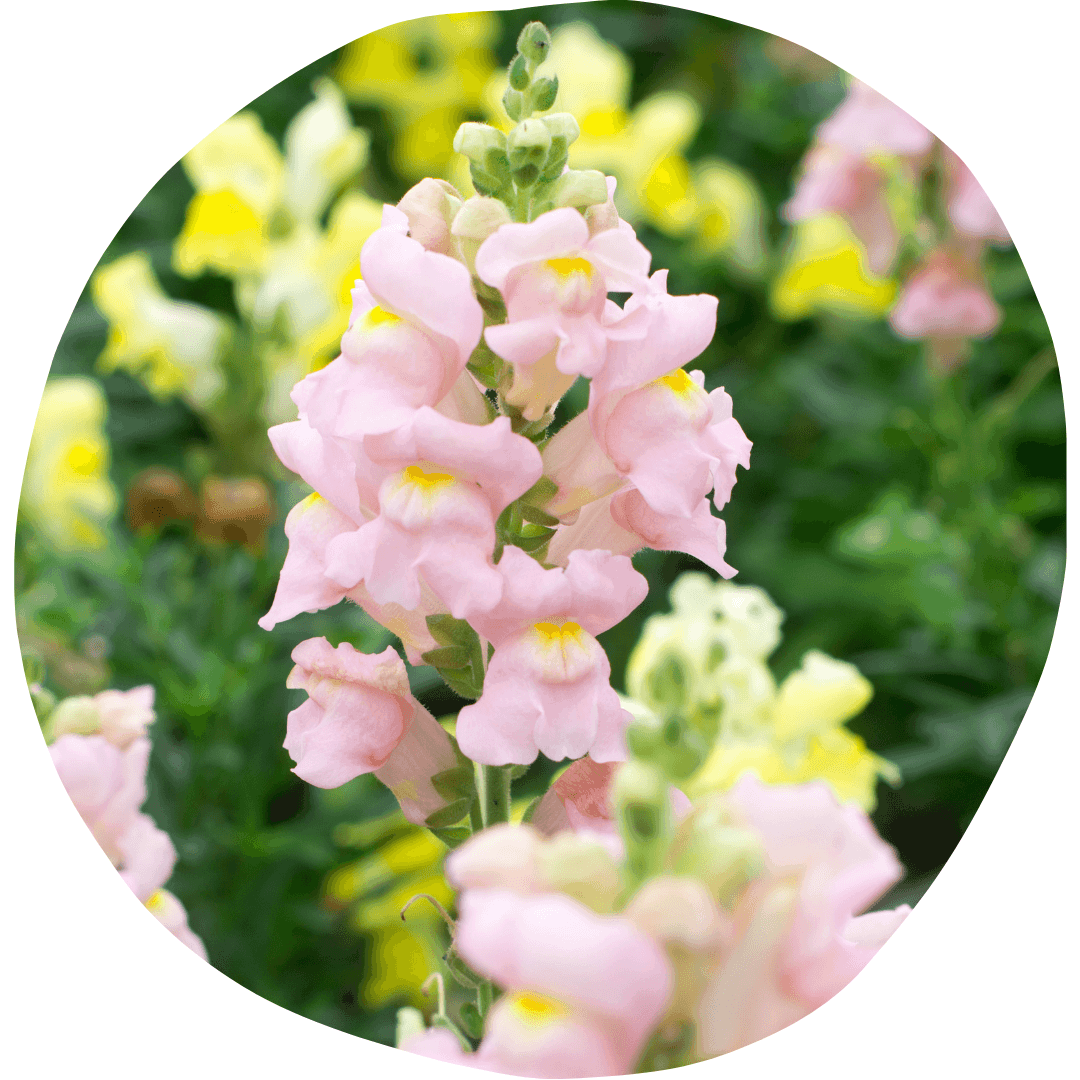How to Grow Snapdragons
Growing Conditions
Snapdragons come in a range of heights and colours and may be grown in the garden or in containers. They're an attractive pollen source for bumblebees. Snapdragons prefer full sun but can tolerate some shade, and require rich, well-draining soil. They make a lovely cut flower and though their bloom time is short, they will often rebloom in the fall.
Starting
Snapdragons should be started indoors 8-10 weeks before the last frost. Sow seeds shallowly, about 1/8" deep. You can sprinkle the seeds on the top of the soil and cover with a fine layer of vermiculite to retain moisture. Bottom water or mist the soil surface to avoid displacing the seeds. Seeds should germinate within 14 days as long as the soil temperature is 21-24°C. When seedlings have reached a height of 3-4" you may pinch them back to encourage branching growth, though this will delay flowering. Harden seedlings off and transplant them out after all risk of frost has passed.
Find our full guide to seed starting here.

Care
Snapdragons require around 1" of water per week, especially during hot and dry periods in the summer. Be careful to water around the base of the plant to avoid wet leaves that lead to fungal infections. Snapdragons can be fertilized with a balanced fertilizer to promote blooms. Deadhead regularly to promote flowering throughout the season.
Pests and Diseases
Aphids - Small green, black, or brown insects that feed on the sap of garden plants. You'll find them under leaves, at blossom tips, and in the joints of stems.
Spider Mites - Tiny reddish brown insects that can be identified by the webbing they create around the leaves and stems of plants.
Downy Mildew - Yellow or white patches that form on the leaves of plants, eventually turning brown and preventing photosynthesis.
Crop rotation, garden cleaning, and proper spacing between plants are the best ways to prevent problems caused by pests and diseases. Diatomaceous earth can be used to control crawling pest species, while sticky traps will catch flying pests. Row covers and insect netting can also prevent travelling pests from landing on your crops and causing damage. Ensure good drainage in your chosen planting spot to prevent problems with fungus and rot. Contact us for more specialized pest control methods such as beneficial nematodes.
Harvest
Harvest your snapdragons when 2-3 florets have begun to open on the stem. Pollinated flowers will quickly drop off so cut your flowers early in the morning when possible. Snapdragons have a vase life of 5-8 days.

